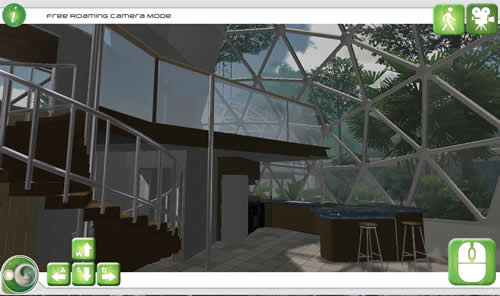- PO Box 989 Mullumbimby Contact us
- Call Us: +61 2 6684 3173
The Geometry Behind Geodesic Domes
The first geodesic dome to grace the planet earth was built by Walter Bauersfeld soon after the First World War. It was not built for the fanciest of reasons- in fact, it was a mere storage for his planetarium projector. All in all, it was the first dome of its kind. One fit to be given the name 'geodesic dome'; coined by Robert Buckminister Fuller (Bucky) in the forties. Geodesic is Latin for 'earth dividing'.
A General Look At Domes
There are several domes that have been built by humankind both in the past and in the present. Most of the domes of yore were immense structures that produced compression forces which in turn increased tension forces at the rims. This meant that these structures were not only prone to cracking as they had significantly high strength to weight ratios but were also in dire need of strong structural supports to keep them erect.
Types Of Domes
There are three main types of domes: monolithic domes, segmented domes and geodesic domes. Monolithic domes are structures that are thrust in one-piece forms. They are usually made of concrete. Segmented domes are typically traditional domes that are segmented. They have very high strength to weight ratios making them less resilient compared to geodesic domes. A geodesic dome on the other hand has significantly lower strength to weight ratios due to what is referred to as energetic-synergetic geometry.
What Exactly Is A Geodesic Dome?
A geodesic dome is a type of dome that is spherical or partially spherical and is divided into a series of circles which intersect to form equal triangles. It is a structure that encloses the most space with a minimum amount of materials. Geodesic domes have several advantages over contemporary buildings. They are more energy efficient, more affordable, stronger and lighter. In fact, the strength of geodesic domes increases with size.
The Geometry
The geometry starts with a polyhedron with 20 triangular faces also known as an icosahedron. This is then laid down inside a theoretical sphere. The triangular faces of the icosahedron correspond to smaller triangles. This results in an intricate system of triangles; which could be equilateral or isosceles. Different domes have different frequencies of triangles. The rule of thumb is that, the larger the dome, the higher the frequency resulting in more curved structures.
About Tensegrity
A geodesic dome is considered to have tensegrity(tensional integrity) because of it is a structure that evenly and constantly distributes stress to all points on it. Simply put, a unique dance of tension and compression occurs in a geodesic dome. Compressed parts are referred to as bars while their tensioned counterparts are referred to as cables. The dance is characterized by the cables following the shortest paths between bars. This tensegrity relies on triangles for strength.
The Triangles
Triangles are extremely strong shapes since they have fixed angles and are able to bear loads evenly thus resistant to distortion. Any force applied to a triangle is distributed evenly to all other sides. Geodesic domes benefit from this incredible strength provided by triangles.
Download the Sustainable Domes Walkthrough app now - just like our facebook page and look for the details.
15m Residential Dome

15m Residential Dome Internal

12m and 15m Residential Domes



